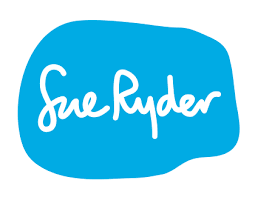Using video counselling to support the bereaved

Contributed by
Sue Ryder
Introduction
Sue Ryder supports people through the most difficult times of their lives. Whether that’s a terminal illness, the loss of a loved one or a neurological condition, the charity aims to be there when it matters.
Sue Ryder has been providing peer support through their Online Bereavement Community since 2015, but they found that people were not always able to find professional support if they needed it.
Steps
1. Research into user need
- Look into common themes that arise in terms of the needs that users say they have but are currently not being supported
- Research with warm and cold audiences to see what ideas can be put in place to support the needs of users
- Set up workshops with service users to find out more about what they need
- Test the idea you have chosen with internal stakeholders and have interviews with other teams for a holistic view of how you can offer a service online
2. Develop a pilot to test the concept
- Try not to build something from scratch. Use existing communities and technologies
- Don’t try to do too much before you know what will work and what is needed
3. Train staff and inform users of how to use the platform
- Make sure counsellors feel comfortable and have support through training
- Ensure information on the software you use is available on your website so clients and users can understand what technology will be required of them; this will ensure that their use of your service is as smooth as possible
- Have clear signposting of who users can contact should they struggle with any platforms. This will lessen the likelihood of disengagement
4. Gather feedback during pilot
- When first setting up your pilot, decide at what points throughout the timeline you want to collect feedback
- Build automated feedback requests into your systems after every session for users to rate the technology and share their thoughts
- Use applications like SurveyMonkey to gather detailed reflections from users
5. Use feedback to develop a full-scale platform
- Gather thoughts from counsellors to understand where they think improvements should be made
- Ensure counsellors and other key stakeholders are involved with the key steps you take during the development of the full-scale platform
- When developing your full-scale platform, do so in design sprints that you create alongside your design agency. These should be built around your key requirements
- Make sure to consider all user groups, so they have a slick and easy experience, which you can ensure by performing tests at the end of each sprint
Software and tools
Twilio offers programmable voice, SMS, and video. Sue Ryder used Twilio to create the video element of its counselling platform, as the platform is highly customisable.
The main benefit is customisation. Sue Ryder has been able to develop a video system that resolved a number of issues raised during the pilot phase of the service, as well as implementing functions that have reduced counsellors’ admin time. The level of customisation could be a limitation in some circumstances, as it can take time to develop.
Twilio
Timekit has three price plans. Sue Ryder used the middle tier, which is $149 (£108.33) per month for 15 resources.
Timekit is a scheduling tool for managing appointment bookings.
As with Twilio, one of the main benefits of Timekit is customisation. Timekit offers two solutions for managing counsellors’ availability – recurring and specific – which allows charities to automate the creation of new appointments while retaining control over specific appointments.
TimeKit
Timekit has three price plans. Sue Ryder used the middle tier, which is $149 (£108.33) per month for 15 resources.
Did you find this useful?
Great! Please tell us how this helped.
How could this be improved?
